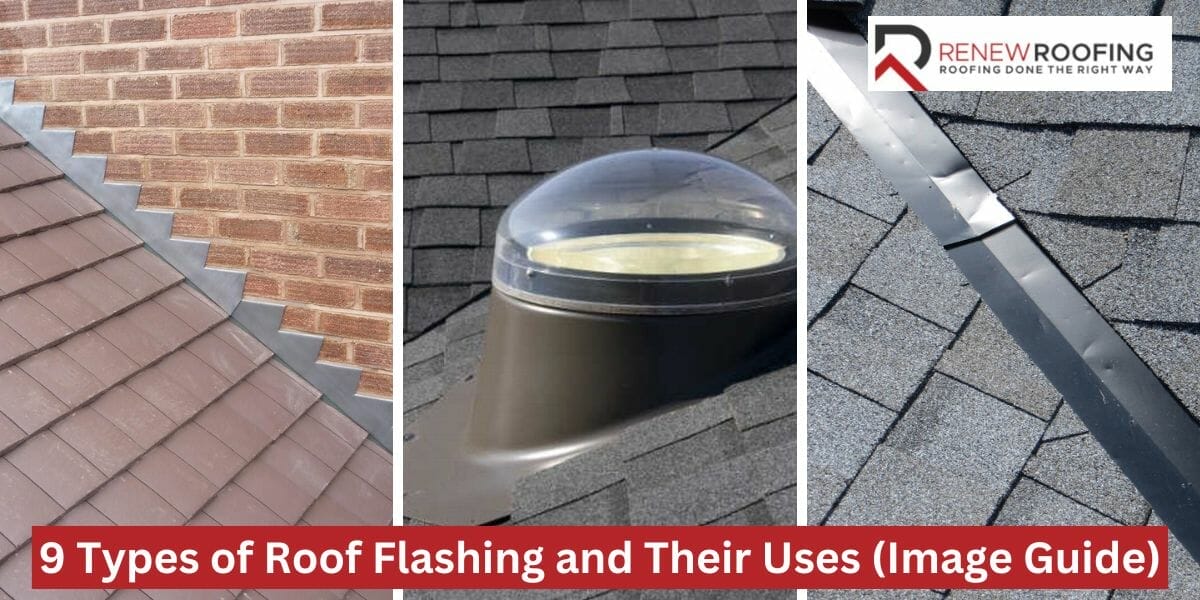Roof flashing is an extremely important component in the overall defense of a building against water damage. Flashing is a piece of metal inserted under the roofing material and installed directly up against the side of a wall. At vulnerable areas, such as roof-to-wall intersections, chimneys, skylights, and vents, it generates a watertight seal so that water cannot enter the structure. Roof flashing prevents leaks, moisture intrusion, and potential structural issues by directing water away from these areas and redirecting it away from the foundation.
Knowing what types of roof flashing are best for you is crucial in maintaining the structural integrity of your home and keeping your family safe. Read on for nine options that may be right for you.
#1 Step Flashing
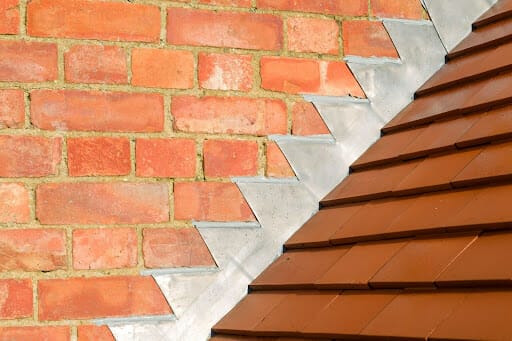
Step flashing has a shape of a rectangle with a 90-degree bend in the center. The most common locations for its application are chimneys and wall intersections. The primary purpose of step flashing is to protect vulnerable areas where water can penetrate, such as the junction between a roof and a chimney or wall. Step flashing can also be used to protect dormers. The use of step flashing is common in roofing applications for both residential and commercial buildings.
Primary Functions
Waterproofing and Leak Prevention: The primary purpose of step flashing is to provide waterproofing at the intersection between the roof and a vertical structure. It directs water away from vulnerable areas, such as roof joints or gaps.
Protection Against Moisture and Rot: It keeps water from pooling or collecting in places where it could cause rot, decay, or damage to the structure.
Compatible With Different Roofing Materials: Step flashing also has integrational capabilities and can be paired with other roofing materials, such as asphalt shingles, metal roofing, or tile roofing.
Aesthetic Appeal: Step flashing enhances the roof’s aesthetics while serving a function. Properly installed step flashing finishes roof-to-wall transitions. It keeps the roofline clean and professional.
#2 Counter Flashing
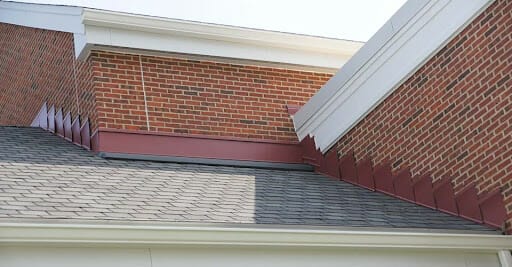
Counter flashing, or continuous flashing, is used to cover the top of other vertical flashings, such as step flashing. It is usually made of metal (aluminum or copper) and is custom-made to fit precisely over the vertical flashing’s top edge. When properly installed, continuous flashing can prevent water from entering a building and provide a neat and finished appearance.
When used with other forms of vertical flashings, such as step or headwall flashing, continuous flashing provides an extra layer of protection against water infiltration when a roof meets a chimney, a wall, or another vertical surface.
Primary Functions
Waterproofing: The primary function of counter flashing is to provide an additional layer of waterproofing at the intersection of a vertical structure and the roof.
Long-Term Protection: Counter flashing provides long-term protection against the elements. Covering the top edge protects vertical elements from rain, snow, and UV radiation. This prevents premature material deterioration and frequent repairs.
Aesthetic Enhancement: Counter flashing also improves the roof’s appearance. It creates a clean, finished look at the roof-to-wall junction, giving the roofing system a more polished and professional appearance.
Sealing Against Debris and Pests: Counter flashing prevents leaves, twigs, and pests from entering gaps between the roof and vertical structure. Covering the step flashing or vertical elements prevents debris from accumulating and causing clogs or infestations.
Structural Integrity: Counter flashing strengthens the roof’s structure. It prevents moisture intrusion that can cause rot, decay, or damage to the underlying materials by sealing and protecting the vulnerable junction. This strengthens the roof and supporting structure.
#3 Drip Edge Flashing
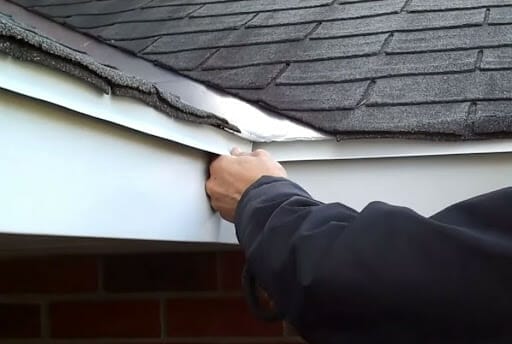
Drip edge flashing is a type of roof flashing that is installed along the edges of a roof, typically at the eaves and rakes. It consists of a strip of metal, typically aluminum or galvanized steel, with a slightly curved shape that goes past the roof’s edge.
Primary Functions
Apart from water prevention and adding aesthetic appeal, drip edge flashing also helps with:
Erosion Prevention: Drip edge flashing prevents soil and landscaping erosion by channeling water away from the roof’s edges. It keeps water from the foundation, preventing soil erosion, damage, and basement flooding.
Ice Dam Prevention: Drip edge flashing prevents water from entering the roof, particularly if ice dams form, which is when the snow melts and refreezes along the edge, backing up water onto the roof.
Protection of Fascia and Soffit: Drip edge flashing protects the fascia and soffit from moisture damage by directing water away from these elements.
#4 Valley Flashing
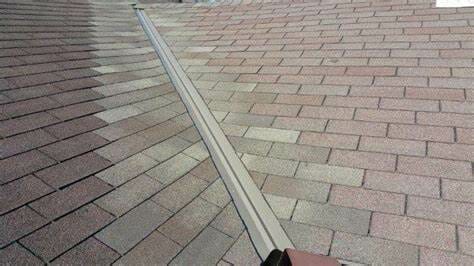
Valley flashing is usually placed where two different-sloped parts of a roof meet in an open valley. It keeps debris from getting stuck on the roof and directs rainwater away and into the gutters. It is usually made of metal, like aluminum or galvanized steel, and is meant to guide water safely down the roof and away from the valley area.
Primary Functions
Apart from offering compatibility with different roofing materials and aesthetic enhancement and protecting the structural integrity of your home, valley flashing also helps with the following:
Water Diversion: Valley flashing diverts water away from the valley to prevent it from pooling or seeping into the roof. It directs water down the valley into the gutters, protecting the underlying materials from water damage and leakage.
Leak Prevention: Valley flashing forms a watertight seal between intersecting roof slopes, this protects the roof deck, insulation, and interior spaces from water infiltration.
Debris Management: Valley flashing helps manage and redirect debris away from the valley, reducing the risk of blockages or clogs that can impede water flow and cause leaks.
#5 Chimney Flashing
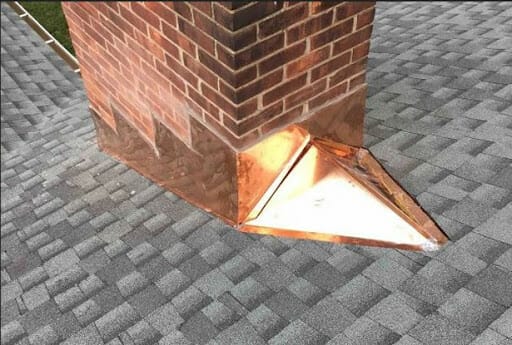
Flashing designed specifically for the transition between a roof and a chimney is appropriately called chimney flashing. It typically consists of metal strips, mostly aluminum or copper, that are fastened around the chimney’s base and extend onto the area of the roof surrounding it.
When chimney flashing is properly installed, it can last over 30 years, depending on factors such as where you live, the shape and size of your chimney, and the materials used. Chimney flashing forms a watertight barrier to prevent water infiltration at the vulnerable intersection of the chimney and the roof.
Primary Functions
Apart from offering water protection, leak prevention, aesthetic enhancement, and debris/pest protection for your home, chimney flashing also helps with the following:
Thermal Expansion and Contraction: Due to the chimney’s thermal expansion and contraction capabilities, chimney flashing lets the chimney expand and contract without compromising the roof or flashing. It prevents damage from material expansion and contraction and maintains a weatherproof seal.
Longevity of Roofing Materials: By effectively diverting water away from the chimney joint, chimney flashing helps extend the lifespan of the roofing materials in the surrounding area.
#6 Vent Pipe Flashing
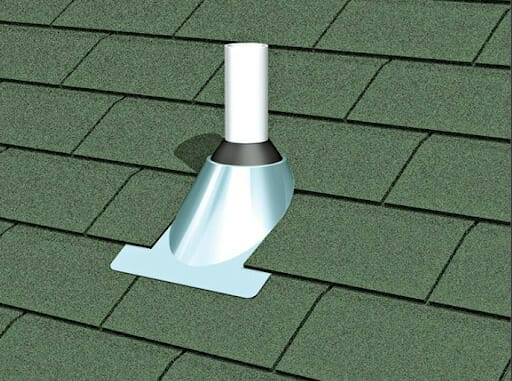
Vent pipe flashing is used to seal the area around vent pipes that go through the roof surface for plumbing exhaust. It is made to stop water from entering where the vent pipe meets the roof. Flashing for vent pipes usually has a base made of rubber or metal and a boot or collar that fits tightly around the vent pipe.
Primary Functions
Apart from offering waterproofing, leak prevention, and aesthetic enhancement for your home, vent pipe flashing also helps with the following:
Protection Against Moisture and Mold: Vent pipe flashing prevents moisture and mold growth. Directing water away from the vent pipe joint keeps the area dry and reduces moisture issues. This is crucial in humid or rainy climates.
Accommodation of Pipe Movement: Vent pipes may move slightly due to thermal expansion, contractions, or the building settling. Vent pipe flashing allows the vent pipe to expand and contract without damaging the roof or flashing. This helps maintain a secure and watertight seal over time.
Compatibility With Different Roofing Materials: Vent pipe flashing works with asphalt shingles, metal roofing, and tile roofing. It can be customized to fit and divert water in different roofing systems.
Secure Fit: The tight fit of the flashing around the vent pipe ensures that water cannot seep into the roofing system, even during heavy rain or snowfall.
UV Protection: Vent pipe flashing is usually UV-protected. Sunlight and UV radiation can deteriorate, crack, or fade some roofing materials. Vent pipe flashing is UV-resistant, ensuring its durability and long-term use.
#7 Skylight Flashing
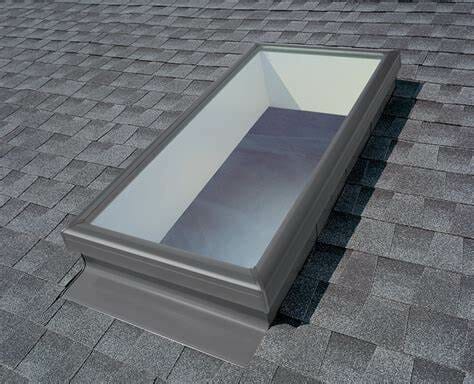
Skylight flashing is a specialized form of roof flashing intended to create a watertight seal around skylights installed on the roof’s surface. It is made up of flashing components that are integrated with the roofing materials located around the skylight and tailored to fit the specific dimensions of the skylight. The flashing around a skylight helps direct water away from the skylight, significantly reducing the risk of leaks.
Primary Functions
Apart from waterproofing and leak prevention, skylight flashing is also crucial for the following reasons:
Weather Protection: It shields the skylight and the rest of the roofing structure from precipitation driven by the wind, snow, and rain, acting as a layer of protective armor.
Integration With Other Roofing Materials: It is designed to integrate with the roofing system in a way that is both seamless and secure, providing a finish that is both aesthetically pleasing and functional.
Protection Against Moisture and Condensation: Skylight flashing prevents condensation around the skylight opening. It keeps water away from the joint while allowing for ventilation, preventing mold and wood rot caused by moisture.
Structural Integrity: Skylight flashing protects the roof’s structure from water damage. Without it, water will infiltrate the gaps around the skylight, causing damage to the roof deck, rafters, and sheathing.
#8 Headwall Flashing
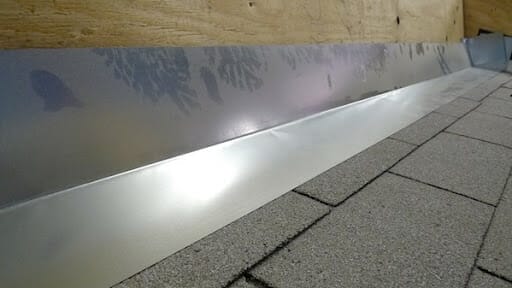
Headwall flashing is a type of roof flashing designed to protect the intersection formed by a roof and a vertical wall. This flashing is positioned against the wall at the intersection where it meets the roof, and tightened in place with fasteners. Half of it is installed below the wall material, and the other half extends out over the roofing material to guide water down the rest of the roof to the drainage system.
It is typically made of metal and can be aluminum or galvanized steel. Headwall flashing creates a watertight barrier, which helps stop water from penetrating the wall and causing damage to the structure.
Primary Functions
Apart from offering waterproofing, leak prevention, and aesthetic enhancement for your home, headwall flashing also helps in the following:
Longevity of Roofing Materials: Headwall flashing helps extend the lifespan of the roofing materials by providing an additional layer of protection against water infiltration.
Compatibility With Different Wall Materials: Headwall flashing can be designed and installed with various wall materials, such as masonry, or stucco.
Structural Protection: By directing water away from the roof-to-wall junction, it prevents water damage to the building’s framework, including rot, decay, and deterioration of the underlying materials.
#9 Cap Flashing
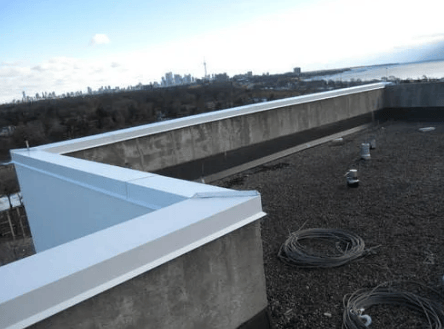
Cap flashing protects the top edges of a roof or wall from water damage. It is made of metal, such as copper or aluminum, and it is installed in a way that overlaps the base flashing and extends beyond the top edge of the roof or wall. This helps to create a watertight seal that prevents water from seeping into the building.
Cap flashing is typically installed around chimneys, skylights, doors, and windows because these are high-risk entry points for water. For example, it could be used for covering the joint between a metal roof and a brick wall.
Primary Functions
Apart from offering an aesthetic enhancement for your building, cap flashing also helps with the following:
Waterproofing: Cap flashing diverts water from the joint, effectively protecting against leaks and water damage.
Leak Prevention: Properly installed cap flashing helps prevent leaks at horizontal joints, such as the junction between a wall and a roof.
Structural Protection: Cap flashing prevents wall or parapet deterioration, ensuring long-term stability and durability. Cap flashing also protects against wind-driven rain and other elements.
Compatibility with Different Materials: Cap flashing works with metal, asphalt shingles, stucco, masonry roofing, and wall materials. It fits different types of construction and diverts water away effectively.
Conclusion
To sum it up, roof flashing serves critical functions in preventing water infiltration and protecting buildings. Each type has its specific application and plays a vital role in directing water away from vulnerable areas, maintaining a watertight seal, and safeguarding the integrity of the roof and structure.
By understanding the importance of roof flashing, recognizing the various types available, and prioritizing proper installation and maintenance, we can ensure effective water management, minimize potential water damage, and prolong the lifespan of our roofs and buildings.
Feel free to contact us when considering these flashing types, our experienced team of professionals specializes in flashing installation. ReNew Roofing can provide personalized advice based on your specific needs and preferences, ensuring the successful protection of your roof and home. Call us today at (813) 400-3329!



